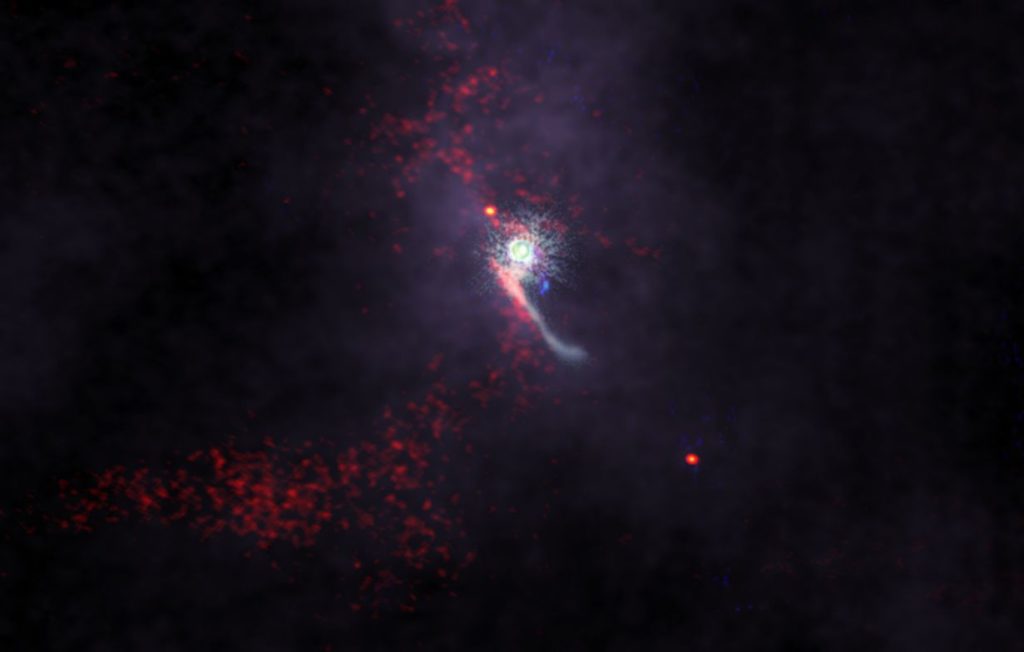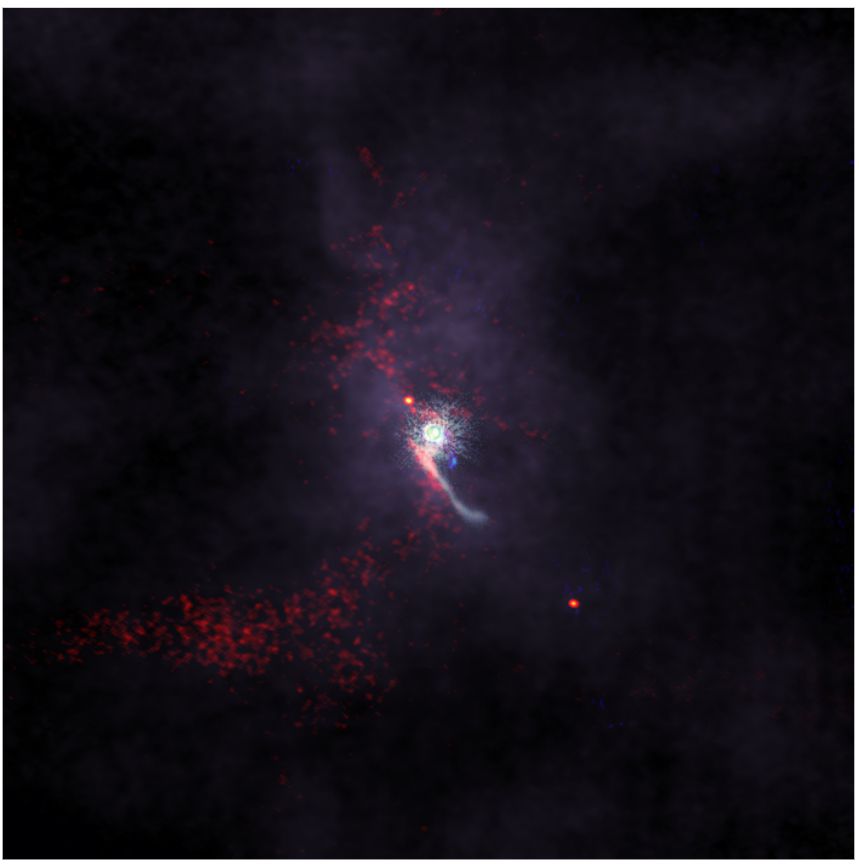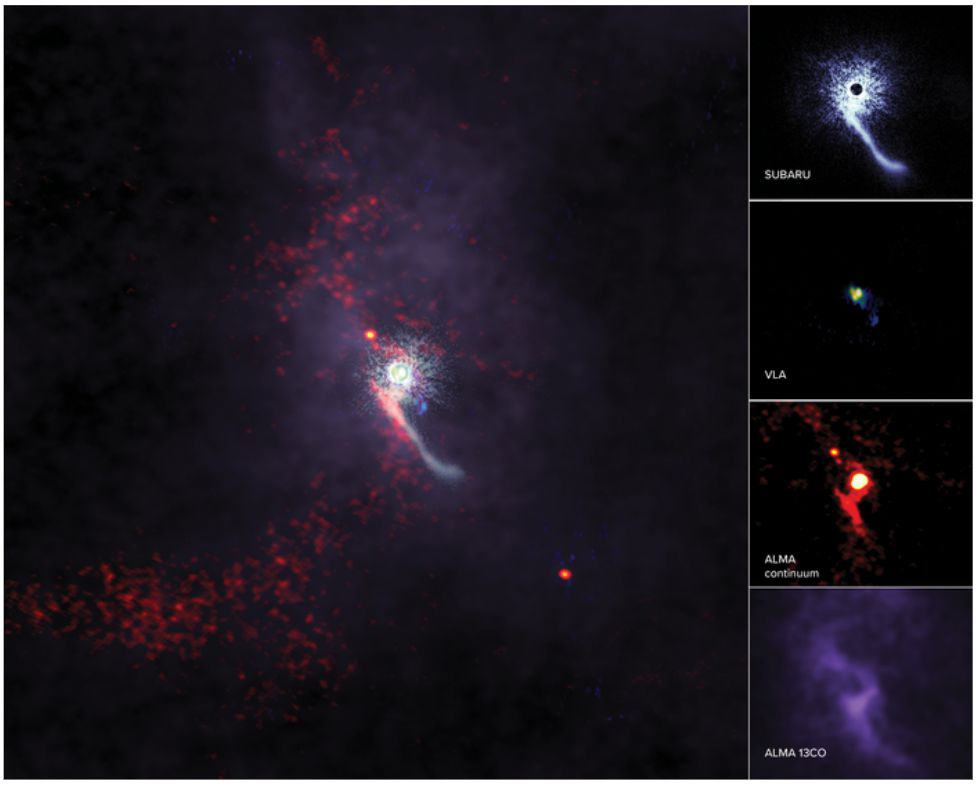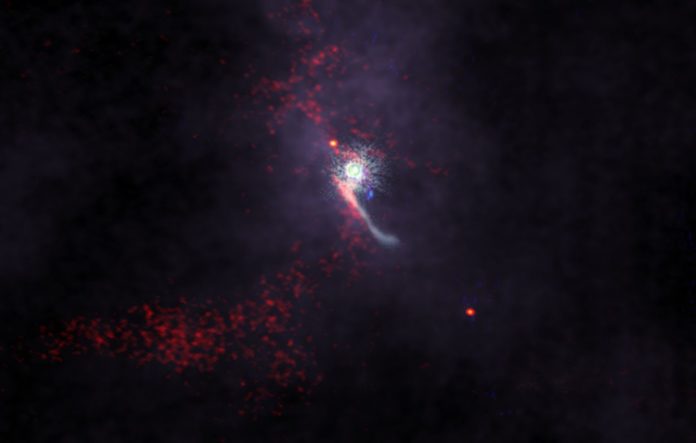An intruder—an object not tied to the system—came close to and interacted with the environment surrounding the binary protostar, causing chaotic, stretched-out streams of dust and gas to develop in the disk encircling it.
Using the Karl G. Jansky Very Large Array and the Atacama Large Millimeter/submillimeter Array (ALMA), scientists discovered a possible stellar flyby event in the Z Canis Majoris (Z CMa) star system.
An intruder—an object not tied to the system—came close to and interacted with the environment surrounding the binary protostar, causing chaotic, stretched-out streams of dust and gas to develop in the disk encircling it.

While such intruder-based flyby events had previously been observed with some regularity in computer simulations of star formation, few compelling direct observations have ever been made, and the phenomena have remained mostly speculative until now.
“Observational evidence of flyby events is difficult to obtain because these events happen fast and it is difficult to capture them in action. What we have done with our ALMA Band 6 and VLA observations is equivalent to capturing lightning striking a tree,” says Ruobing Dong, the principal investigator on the new study. “This discovery shows that close encounters between young stars harboring disks do happen in real life, and they are not just theoretical situations seen in computer simulations. Prior observational studies had seen flybys, but hadn’t been able to collect the comprehensive evidence we were able to obtain of the event at Z CMa.”
Perturbations, or disturbances, like those at Z CMa are often created by sibling stars growing up together in space, rather than by intruders.
“Most often, stars do not form in isolation,” adds Hau-Yu Baobab Liu, a co-author on the work, “The twins, or even triplets or quadruplets, born together may be gravitationally attracted and, as a result, closely approach each other. During these moments, some material on the stars’ protoplanetary disks may be stripped off to form extended gas streams that provide clues to astronomers about the history of past stellar encounters.”
Nicolás Cuello, one of the co-author of the paper, stated that in the case of Z CMa, it was the morphology, or structure, of these streams that enabled scientists identify and localize the intruder.

“When a stellar encounter occurs, it causes changes in disk morphology—spirals, warps, shadows, etc.—that could be considered as flyby fingerprints. In this case, by looking very carefully at Z CMa’s disk, we revealed the presence of several flyby fingerprints.”
These fingerprints not only assisted scientists in identifying the invader, but also prompted them to speculate on what these interactions might mean for the future of Z CMa and the baby planets that are forming in the system, a process that has so far eluded scientists.
“What we now know with this new research is that flyby events do occur in nature and that they have major impacts on the gaseous circumstellar disks, which are the birth cradles of planets, surrounding baby stars,” added Cuello. “Flyby events can dramatically perturb the circumstellar disks around participant stars, as we’ve seen with the production of long streamers around Z CMa.”
Liu added, “These perturbers not only cause gaseous streams but may also impact the thermal history of the involved host stars, like Z CMa. This can lead to such violent events as accretion outbursts, and also impact the development of the overall star system in ways that we haven’t yet observed or defined.”

Studying the evolution and growth of young star systems around the galaxy, according to Dong, helps scientists in better understanding the origins of our own Solar System.
“Studying these types of events gives a window into the past, including what might have happened in the early development of our own Solar System, critical evidence of which is long since gone. Watching these events take place in a newly forming star system provides us with the information needed to say, ‘Ah-ha! This is what may have happened to our own Solar System long ago.’ Right now, VLA and ALMA have given us the first evidence to solve this mystery, and the next generations of these technologies will open windows on the Universe that we have yet only dreamed of.”
Image Credit: ALMA (ESO/NAOJ/NRAO), S. DAGNELLO (NRAO/AUI/NSF), NAOJ
You were reading: ALMA catches “intruder” redhanded in rarely detected stellar flyby event
